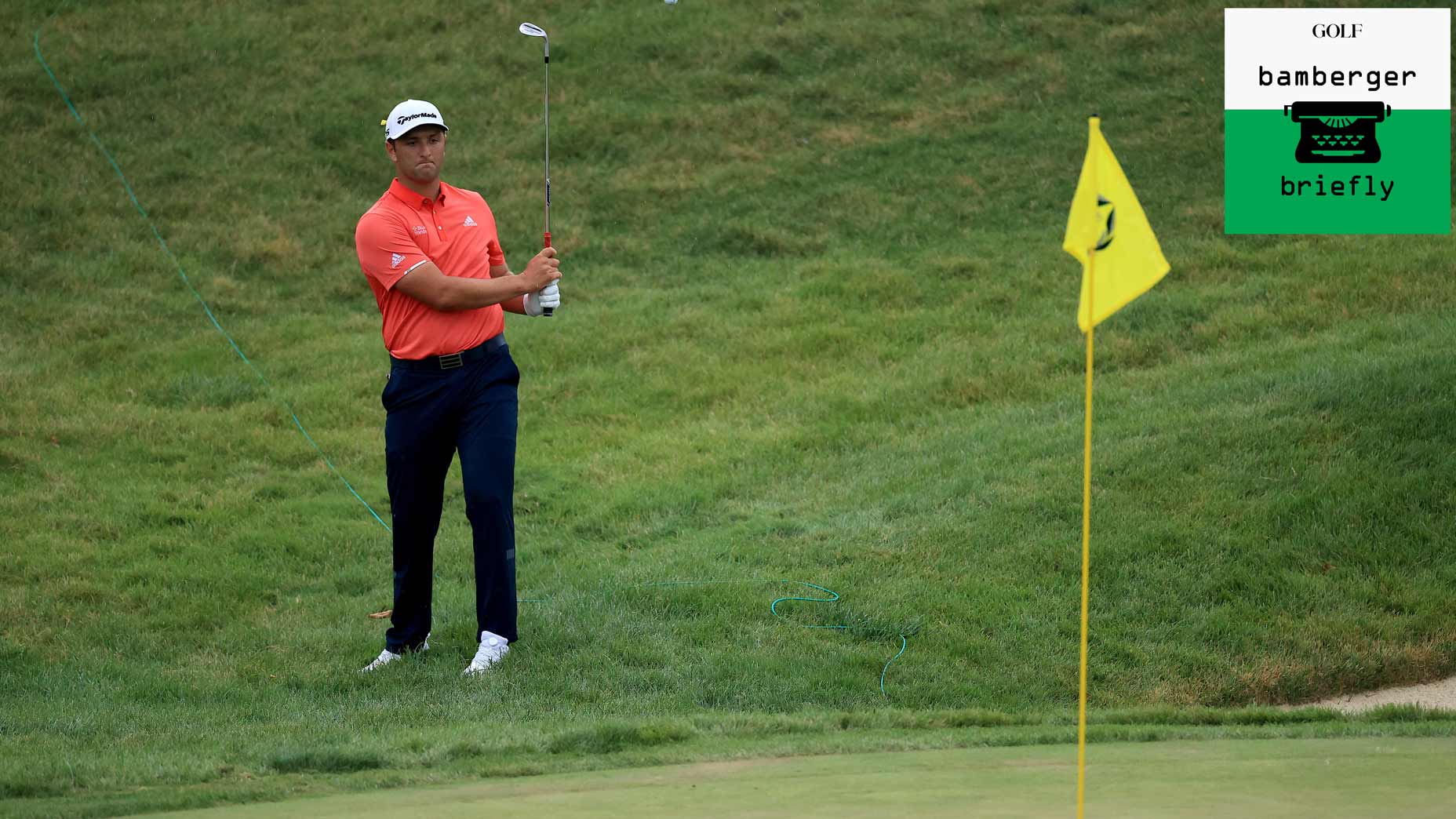Wednesday’s mail brought the usual bills, catalogs and magazines — and a copy of the 1888 Rules of Golf. Yes, these are unpredictable times. The lost-ball rule then, per the Royal & Ancient, allowed for a 10-minute search. (Now it’s three minutes and from what I have observed on Tour loosely enforced.) All the pronouns in 1888 are he. (Now the rules bear no gender.) Section IX from ’88 covers of the Green and Penalties. From that section: “A ball is considered to have been moved if it leaves its original position in the least degree.” That’s foundational. That was true then and remains true.
Enter Jon Rahm, in the wet, long rough to the right side of the par-3 16th hole on Sunday at the Memorial. Three holes to play for the biggest win of his career. He’s 10 yards from the hole. He gets the sole of his wedge dangerously close to the ball. It happens a thousand times a week. That flange is way too close to the ball. It moved, fractionally.
Had he not been in there with that wedge so aggressively, the ball would not have moved. That is the starting point of this event and that is the moral of the story. When in doubt, hover. But did he see the ball move, in real time? He said he did not. So then the question becomes, in accordance with the newish “naked eye” rule, is that movement Rahm’s responsibility or not?
Here’s the language: “If the facts shown on the video could not reasonably have been seen with the naked eye, that video evidence will be disregarded even if it indicates a breach of the Rules.”
By implication, if the relevant facts could be seen the naked eye, then there is a breach of the rules.
Rahm said, after the round, that he did not know the ball moved. He acknowledged, after seeing the video, that the ball did move. Slugger White, the Tour’s veteran rules official, gave Rahm a one-shot penalty because the ball moved. In other words, the “naked eye” test did not apply. Rahm got a second shot for failing to move the ball back to its original position.
You could say that it’s impossible to move the ball back to its original position when the movement is so minute. If you want to argue that that rule should be changed, you might start with a letter. (Rules@USGA.org.) If you think there should be a rule change to cover tiny, insignificant movements of the golf ball, write a letter. (Ditto.) But there’s a reason why that rule says “in the least degree” in 1888 and why it has not, in spirit, changed since. It has nothing to do with video. It has everything to do with a golfer’s ball being solely under his or her (or their) care. You own your ball and all that it does. So watch it like a hawk. This has nothing to do with our casual golf. It has everything to do with the game at its highest levels.
White, as fair-minded as a rules official can be, wasn’t saying he didn’t believe Rahm. He wasn’t sending a message to every other player on Tour to be more careful in that situation. He wasn’t doubling-down on his 2013 ruling when Tiger Woods was assessed two shots at a FedEx event in Chicago. He was saying that Rahm’s ball moved and that Rahm, in White’s judgment, could have reasonably seen it move with his naked eye. Whether he did or didn’t does not matter. He could have. The rules are harsh, by necessity. Alex Trebek, deciding what is and isn’t acceptable on Jeopardy!, is harsh, too. But like Slugger, he has an endearing bedside manner, and that helps. But Slugger’s job, like Trebek’s, is to get to the facts of the matter.
Rahm holed out the shot, after the ball’s micro-movement. Did that tiny movement change everything about the shot? Some will say yes, some will say no.
Here’s what you can say: the ball moved, fractionally, and that is Rahm’s responsibility. One rules official understood that: Slugger White. One player did, too: Jon Rahm.
In the least degree. That language has evolved but its spirit endures.
Michael Bamberger may be reached at Michael_Bamberger@golf.com.
